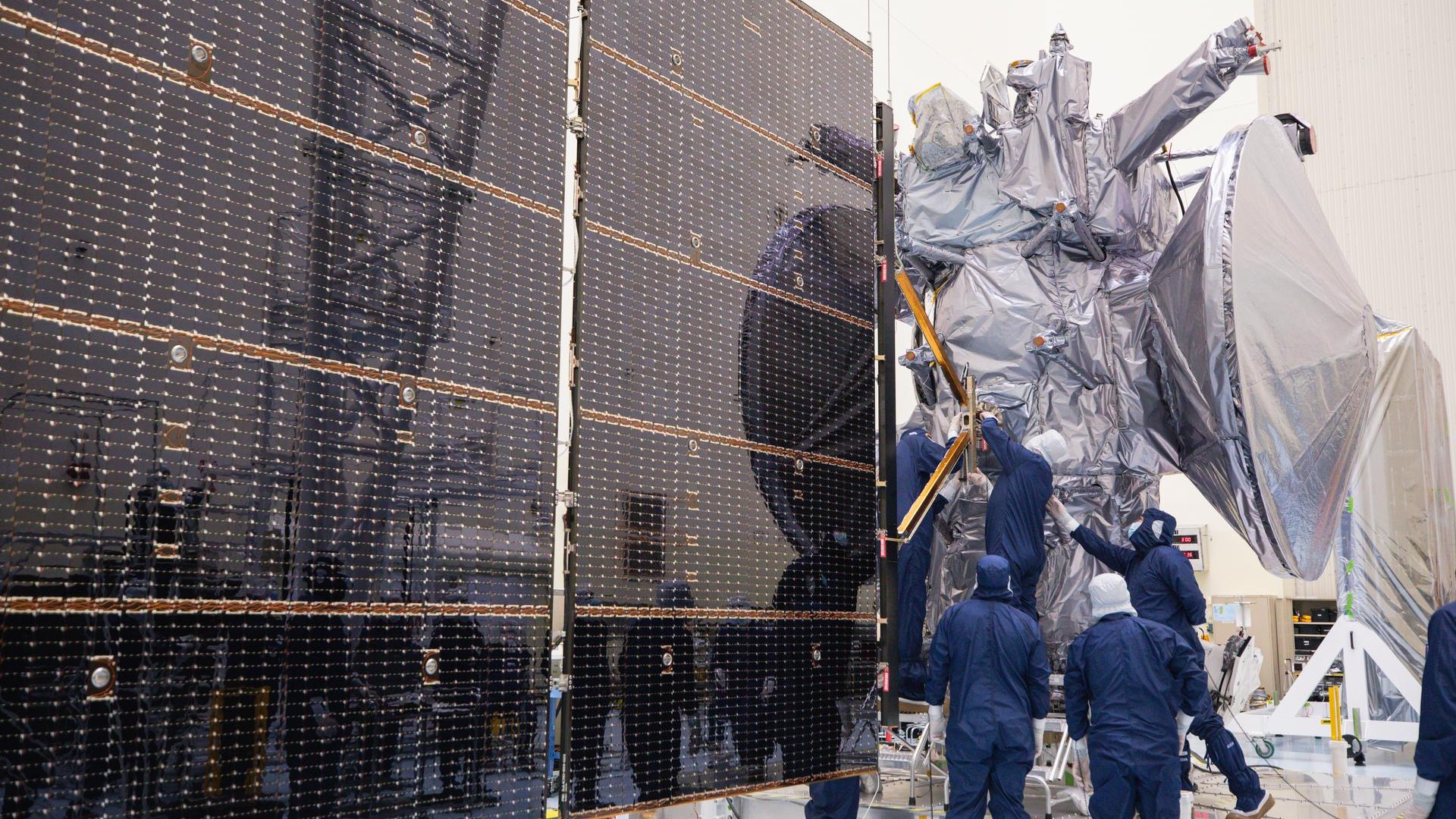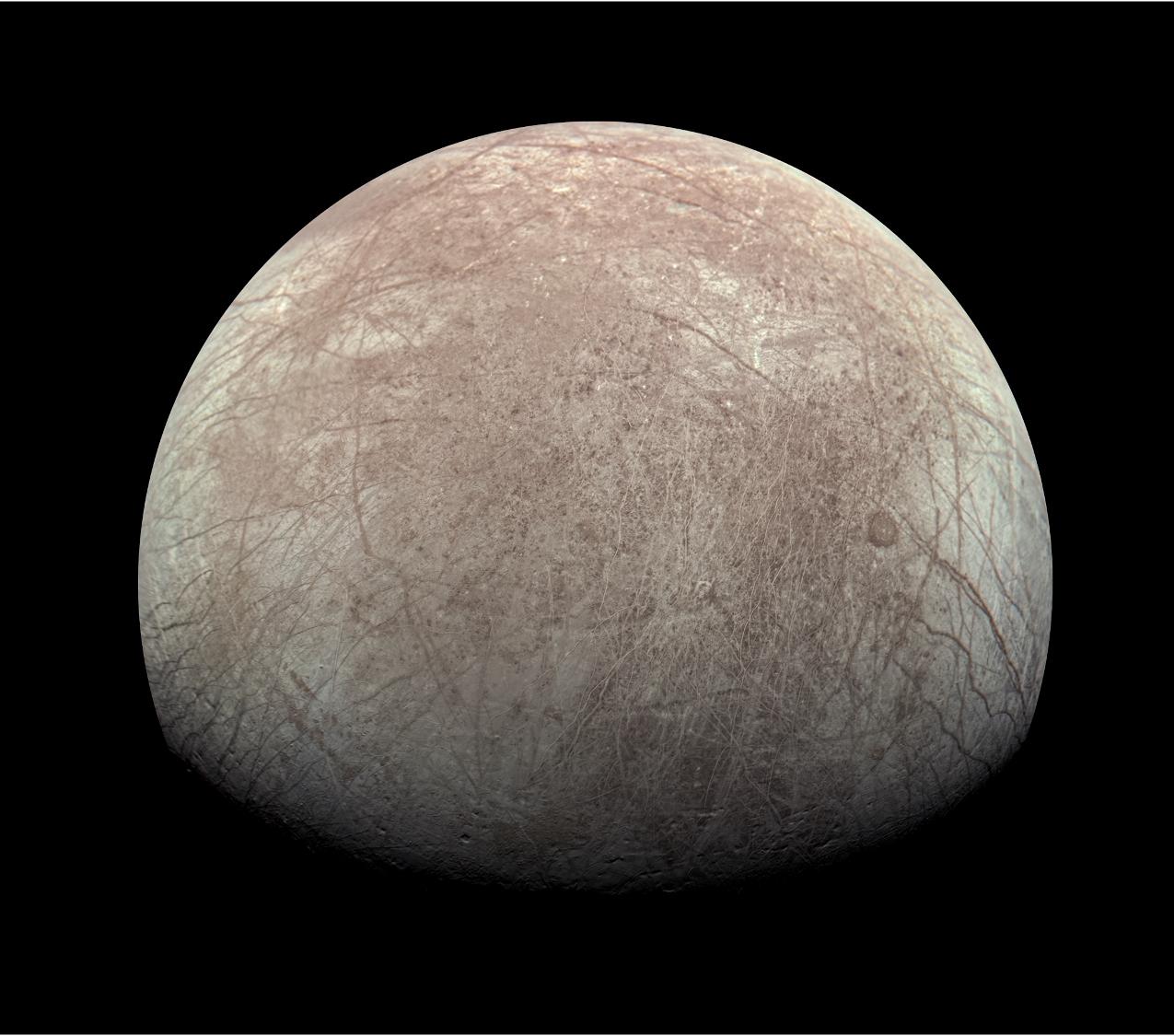
NASA's highly anticipated Europa Clipper probe bound for an icy moon of Jupiter is on track for its liftoff next month.
Europa Clipper, which will study the potentially life-harboring Jupiter moon Europa up close, passed a crucial technical review called Key Decision Point E (KDP-E) today (Sept. 9). The good news means that Clipper can proceed into final preparations for launch, which is scheduled to take place atop a SpaceX Falcon Heavy rocket from NASA's Kennedy Space Center in Florida on Oct. 10.
"I am thrilled to say that we are confident that our beautiful spacecraft and capable team are ready for launch operations and our full science mission at Europa," Laurie Leshin, director of NASA's Jet Propulsion Laboratory (JPL) in Southern California, told reporters this afternoon.
This is an epic mission."
-- Mission Program Scientist Curt Niebur
A few months ago, passing KDP-E may have seemed like a long shot for the $5 billion Clipper mission.
In May, the mission team realized that Clipper's transistors, which control the flow of electricity on the spacecraft, suffer failures at lower radiation doses than previously thought. That could be a big deal, given that Europa lies within a radiation hot zone, thanks to Jupiter's enormously strong magnetic field.
Related: Why NASA's Europa Clipper to Jupiter's icy moon is such a big deal
After four months of virtually non-stop testing and analysis, however, the Clipper team determined that the transistors should hold up throughout the probe's four-year science mission.

Clipper will orbit Jupiter and study Europa — which is thought to harbor a huge ocean beneath its icy crust — over the course of nearly 50 close flybys. This mission design means that the probe will be in a radiation danger zone for a relatively small percentage of its time in the Jupiter system. And that will give the transistors a chance to recover, team members said.
"We concluded, after all of this testing, that during our orbits around Jupiter, while Europa Clipper does dip into the radiation environment, once it comes out, it comes out long enough for those transistors the opportunity to heal and partially recover between flybys," Europa Clipper Project Manager Jordan Evans, also of JPL, said during today's press conference.
The team will continue monitoring the transistors after Clipper's launch, Evans said. But, he added, "the Europa Clipper project and I personally have high confidence we can complete the original mission for exploring Europa as planned."

Europa Clipper is the largest spacecraft NASA has ever built for planetary exploration. With its huge solar arrays extended, the probe will span about 100 feet (30 meters) from end to end, making it longer than a basketball court. At launch, Clipper will weigh about 13,000 pounds (6,000 kilograms), with propellant making up nearly half of that total.
The probe will carry nine science instruments to the Jupiter system, which it's expected to reach in 2030. Clipper will use that gear to study Europa's icy surface and characterize its subsurface ocean, with the main goal of determining if the moon is capable of supporting life as we know it.
"This is an epic mission. It's a chance for us to explore not a world that might have been habitable billions of years ago, but a world that might be habitable today, right now," said Europa Clipper Program Scientist Curt Niebur, who's based at NASA headquarters in Washington, D.C.
"It has definitely been worth the wait," he said of the mission. "It's been worth the hard work."







